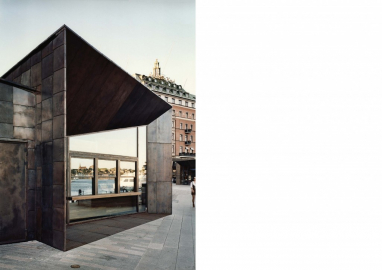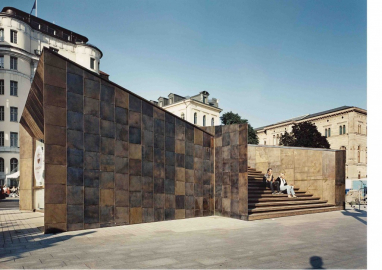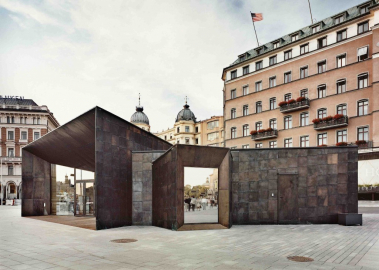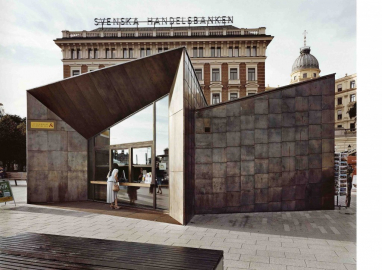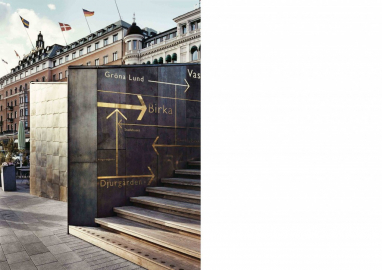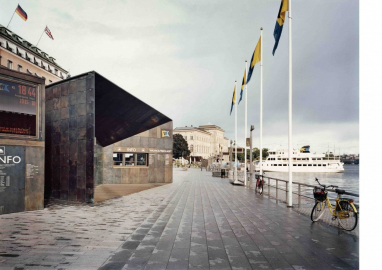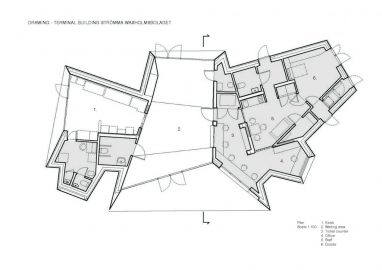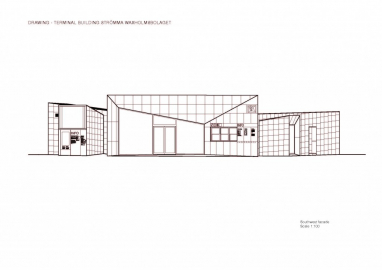Ferry Terminal Buildings Strömkajen
The terminal buildings for the archipelago ferries are situated at Strömkajen one of StockholmŽs most frequently visited areas. It is the departure point for ferries to the archipelago as well as the sightseeing boats that circulate around Stockholm. Strömkajen is situated in the middle of the historic National Heritage center of Stockholm. The National Heritage site is defined by the waterfront and the important monumental facades surrounding the sea. It is surrounded by some of the most prominent buildings in Stockholm, the Grand Hotel, the National Museum of Art and the Royal Palace. The city requested that the new ferry terminal buildings become modest and small so as not to compete with the surrounding context.
The quayside has historically been a central place for transportation of goods to and from Stockholm. During the late 20th century the shipping of goods declined and was replaced by traffic and parking. The site became highly frequented by tourists and commuter traffic. We initially saw the possibility to transform the sunny, but inhospitable quayside to a public place where people could stay and experience a unique view of Stockholm.
The geometry of the buildings derives from the concept of framing, inspired from the large number of tourists capturing memories of the waterfront views with their cameras. The buildings basic form, the cone, frames views of the surroundings. To meet the demand of a larger and more complex program, the cones are combined and added to each other, resulting in three expressive buildings. Every building is unique but together they create a cohesive expression representing the boat traffic of Strömkajen.
The quayside, both as an exposed site by the sea and its relevance to the tourist season, dictates a small construction zone and a short production time on site. The solution became a prefabricated concrete frame as a non-organic structure that considers the harsh seaside climate. As the buildings are mostly visited during the summer period the interior spaces need to be cooled. A desirable indoor climate is achieved by the thermal mass of the concrete together with a geothermal cooling system.
The facades and roof are covered with burnished Tombak, a brass alloy. The material has a historic relation to boats and ferries and the darker burnished finish allows the terminal buildings to blend in with the lower level rustication of the monumental facades. The material gradually evolves from a more golden surface, to a darker brown-purple metal, gaining a weathered patina over time. The use of Tombak on the roof and facade is also a way of taking care of storm water and handling other functional issues without the need of archetypical building details such as guttering and drain pipes. The storm water runs from roof to facade and on to the pavement, which serves as a neutralizer of harmful copper-ions, before running into the drain. The unified use of material enhances the sculptural reading of the buildings.

